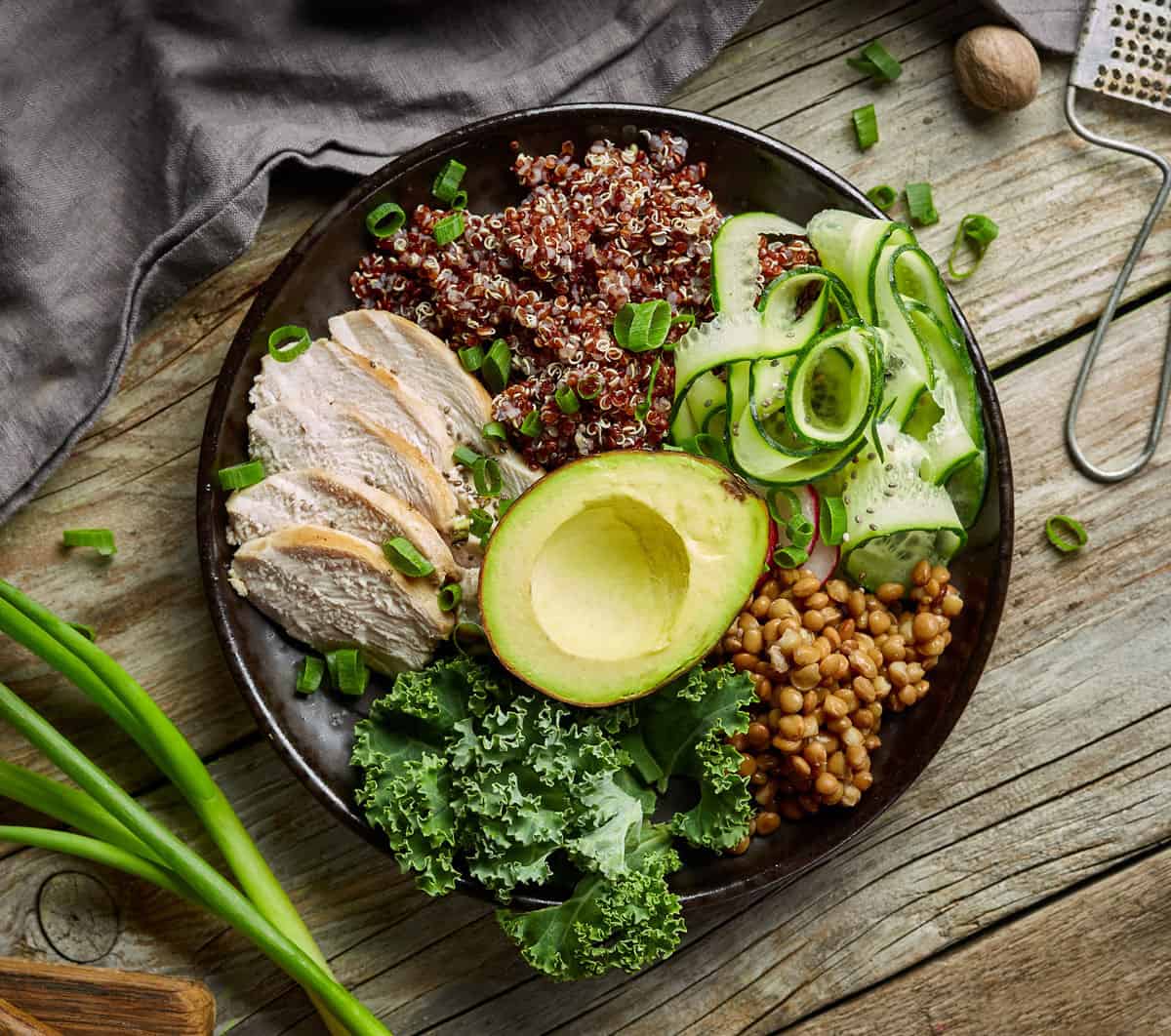
You probably know by now that eating a healthy diet is critical for good health. But when you’re not well, your diet changes (as you’ve probably found. In the process, have you ever asked yourself how much protein do you need to eat to heal?
I’d argue that the sources out there on the interwebs don’t properly address this.
You’re here because you aren’t well. You might not be anywhere near death’s door, but you’ve got way too many symptoms that keep you from living a good, healthy life.
To be honest, you’ve probably WAY underestimated how much protein do you need to eat in your diet. Especially if you plan on getting better.
So I’m going to demystify the importance of protein intake (while healing) and how much protein you should eat daily. And I’m also going to share tips that to figure out how much protein you need to eat and how to practically hit your target amount (without being a mathematician).
What is protein’s role in your body?
Protein that you eat is used to make new muscle tissue along with various other tissues all throughout your body. It’s also critical for the production of neurotransmitters, enzymes, hormones like thyroid hormone, and other chemicals.
 These substances are responsible for making sure that your body runs optimally. They are just as important to your health as micronutrients like vitamins and minerals.
These substances are responsible for making sure that your body runs optimally. They are just as important to your health as micronutrients like vitamins and minerals.
Because I work with clients who are on a healing journey addressing issues like gut infections, autoimmunity, eczema, lupus, chronic fatigue, and brain function, protein intake is key.
What I’ve found is that many are not consuming appropriate levels of protein.
Often it’s because they don’t know how much protein they need to consume on a daily basis.
And other times, they’ve heard that they should cut back for the sake of their health (and that of the planet). While these are certainly noble and reasonable concerns, someone on a healing journey does not have the same luxury as someone else who is healthy and well.
That said, being sick or unwell for long periods of time changes the game.
If you’ve been struggling with…
- Autoimmunity
- Leaky gut syndrome
- IBS
- Chronic diarrhea or constipation
- Skin rashes (eczema, psoriasis, dermatitis)
- Brain fog and memory recall
- Chronic fatigue
- Muscular weakness
- Poor sleep or even insomnia
- Food sensitivities
- Gut infections
… then you can’t skimp on your protein intake.
 When your health is compromised, it becomes critical to get enough macronutrients as well as micronutrients to refill the proverbial well. Macronutrients are protein, carbs, and fat while micronutrients are vitamins and minerals.
When your health is compromised, it becomes critical to get enough macronutrients as well as micronutrients to refill the proverbial well. Macronutrients are protein, carbs, and fat while micronutrients are vitamins and minerals.
Part of the journey back to feeling well involves rebuilding healthy tissue. Doing so requires enough raw materials coming in through food to accomplish the goal.
As an example, I’ve had eczema clients come to me on all sorts of supplements that are supposed to be good for their skin. They also happened to be eating a lower amount of protein. Ultimately, those supplements will not ultimately fix the issue when the required protein simply isn’t available.
While I certainly applaud adding in more plants to your diet, it’s important to make sure that you’re eating enough protein. The US is by no means a protein-starved nation. But if you’re more health-conscious, it can be easy to reduce your protein intake below what is really appropriate for your particular circumstance.
Animal vs Plant protein — what’s better?
If you’ve ever thought that all protein no matter the source is created equal, that’s sadly not true.
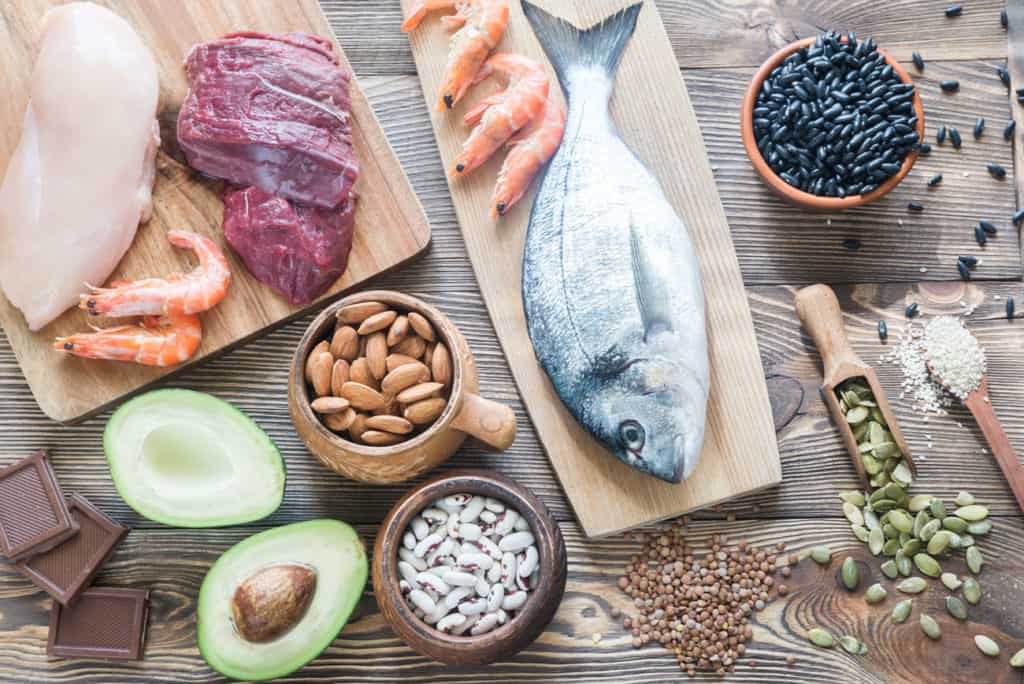 It’s not critical for you to eat meat. But if you choose to avoid it for whatever the reason, you’ll need to be more aware of your protein intake.
It’s not critical for you to eat meat. But if you choose to avoid it for whatever the reason, you’ll need to be more aware of your protein intake.
The reason is that a lot of plant-based protein (that’s also gluten-free) isn’t typically as protein-dense as animal sources. You may find it difficult to consume an appropriate amount as you support your body to heal.
So the question isn’t “which is better — animal protein or plant protein?”.
What you should ask instead is “how much protein your body will need to optimally function based on your unique healing journey?”.
Getting a balanced mix of plant and animal protein is ideal, but there are many more veg-friendly options out there now that can help someone who isn’t keen on eating meat or animal products.
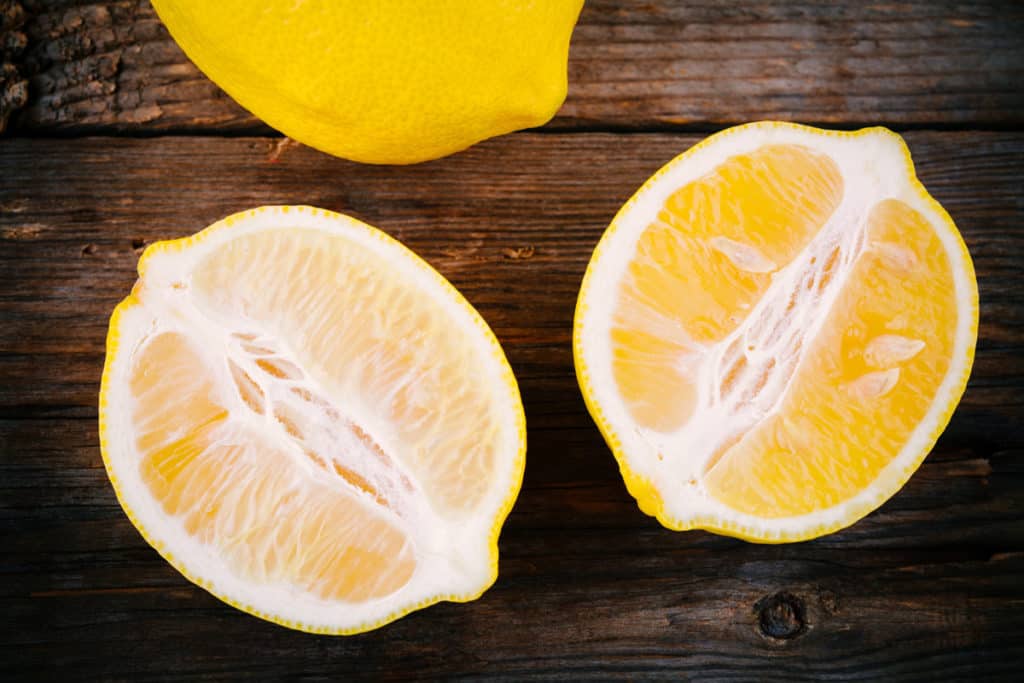 Something to consider is that iron is generally better absorbed from animal protein versus plant protein. And even more so when Vitamin C from citrus fruit is included in the meal (lemon juice is an excellent choice).
Something to consider is that iron is generally better absorbed from animal protein versus plant protein. And even more so when Vitamin C from citrus fruit is included in the meal (lemon juice is an excellent choice).
Additionally, sulfur-rich amino proteins are more commonly found in animal products compared to plants. Sulfur is an important micronutrient that is often used to help with chronic skin conditions like eczema, psoriasis, and dermatitis as well as with your body’s detoxification systems.
On the flipside, it’s possible to be sensitive to different forms of animal proteins (beef, eggs, dairy) as well as plant proteins (ie. soy, gluten).
I’ve had clients diagnosed with an alpha-gal allergy making them allergic to all mammalian protein. While others have had pretty strong sensitivities to things like chicken, eggs, dairy, or even shellfish that act as triggers to inflame their gut.
Soy and soy products are contraindicated if you’ve got low thyroid function and Hashimoto’s Thyroiditis.
Whether you consume animals, fish, or plants, your decision should be one that’s focused on what you need to heal. Find the best quality sources and focus on getting enough to allow your body to do this type of heavy lifting.
Why do you need to eat protein?
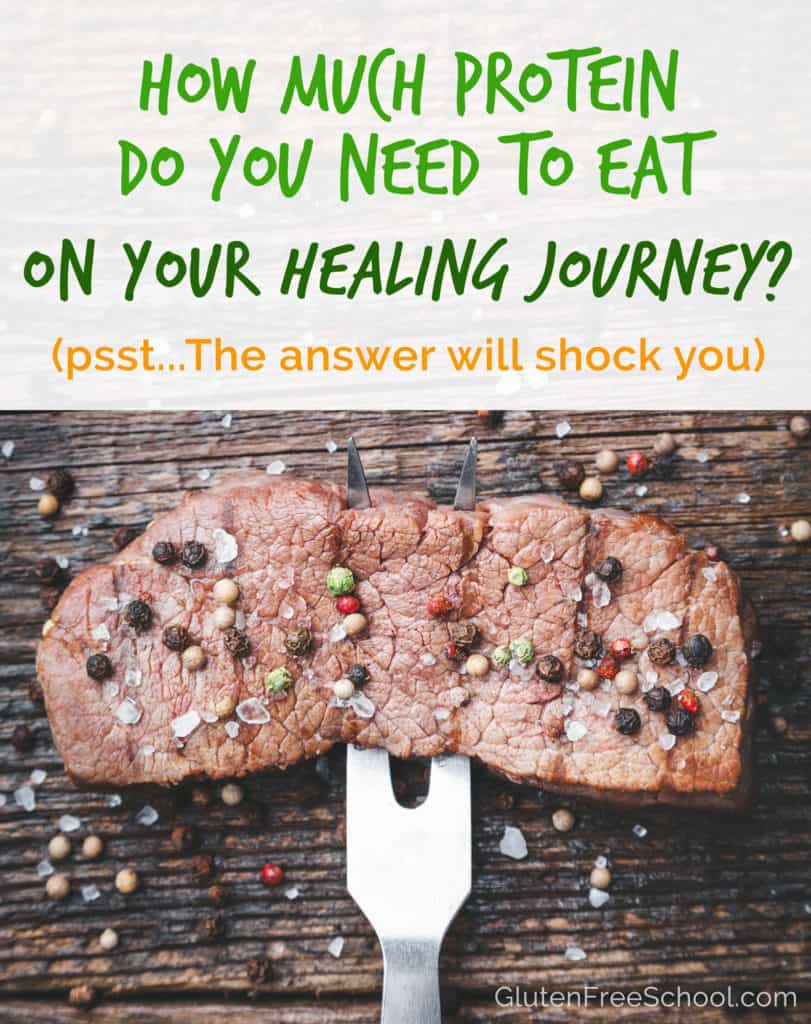 The reason why you need to eat protein is pretty clear and simple.
The reason why you need to eat protein is pretty clear and simple.
Unlike fat and carbs, there are no storage centers in your body for protein. That means you’ve got no protein reserves to draw from when you don’t eat enough.
There are consequences to low intake. Since there are no stores to use, your body will essentially steal the protein it needs from other systems that aren’t as critical to keep you alive.
For example, it’s not uncommon to see someone living with horrible eczema. In this case, the skin is not as critical as say your heart or kidneys when there isn’t enough protein available in your diet.
I’m by no means implying that eczema or any chronic illness is simply a lack of protein, but it is one important piece. You can read more about eczema triggers and natural eczema treatments HERE.
Getting enough protein (and protein building blocks)
The protein that you eat doesn’t just get randomly plugged in anywhere in your body.
But to understand this, you have to know a bit about protein digestion.
Protein digestion begins in the stomach where the environment is meant to be really acidic. Enzymes help speed up the process of protein digestion as well which continues as the food moves into your small intestine.
If you have low stomach acid or have taken acid-blocking medication for longer than a few months, digesting protein will be difficult. And those undigested proteins can be a trigger for gut issues like SIBO, leaky gut, and other GI problems.
Each protein is broken down into its smallest building blocks. These fragments are called Amino Acids.
I know… it’s science-y, but hang in here with me for a moment!
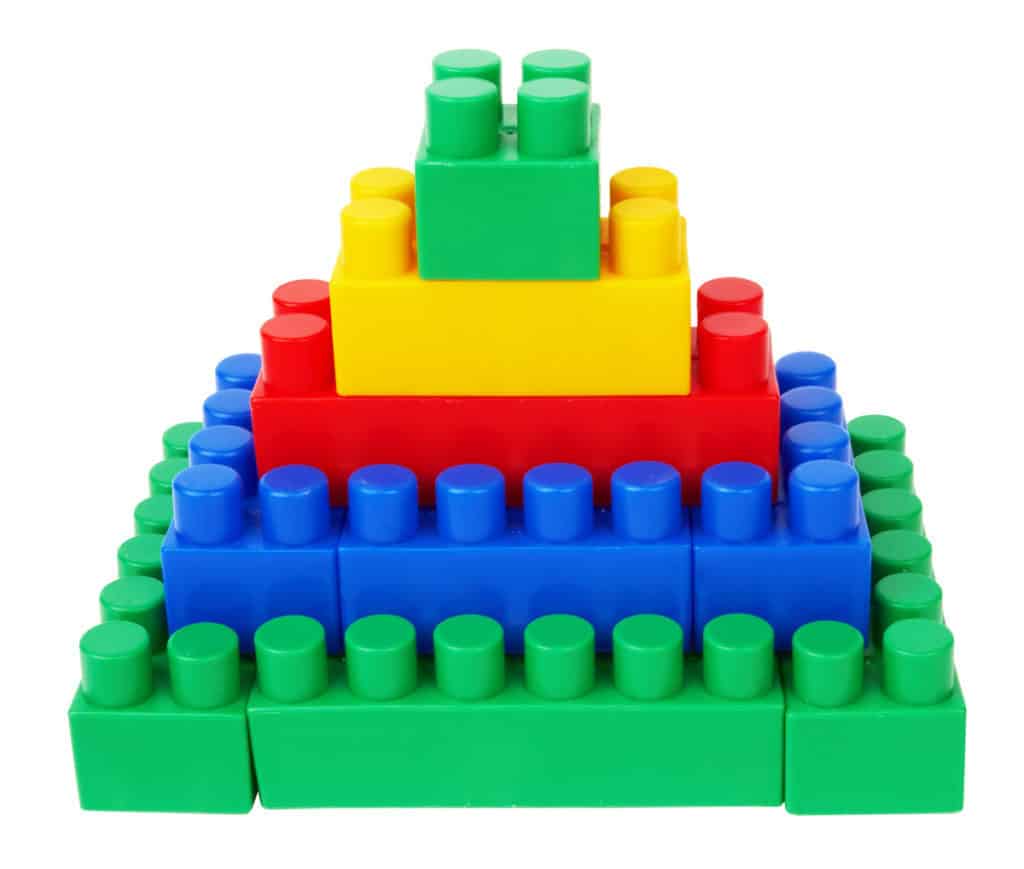 Imagine a bunch of Legos all stuck together.
Imagine a bunch of Legos all stuck together.
As a whole, the Legos are like a protein (say from a burger) that you’ve eaten.
Each individual lego is a different amino acid.
Once the amino acids are pulled apart from each other, they can be absorbed in your gut.
Your body then uses them where it sees fit based on need and urgency.
In total, there are 20 different amino acids. Different combinations create all of the different proteins found on Earth.
But where things get tricky is that each amino acid is not all equal. Just like there are essential fatty acids (aka. Omega 3s), there are also essential amino acids.
Your body cannot produce or alter other amino acids in order to make essential amino acids. Instead, they must be consumed regularly or else you can become deficient.
A deficiency of any amino acid is a big deal. When there is a lack of certain amino acid(s), your body can’t simply replace what’s missing with some other random amino acid. Each is different and has unique properties that make the end product — muscle, hormones, etc. — work correctly.
Swapping even a single amino acid for another can cause serious problems in a healthy person. The effect can be even worse for you if you’re working to recover from chronic illness. One example of this is the genetic SNP that occurs in the MTHFR enzyme which creates issues metabolizing folate and proper methylation.
Can’t I just supplement with Collagen?
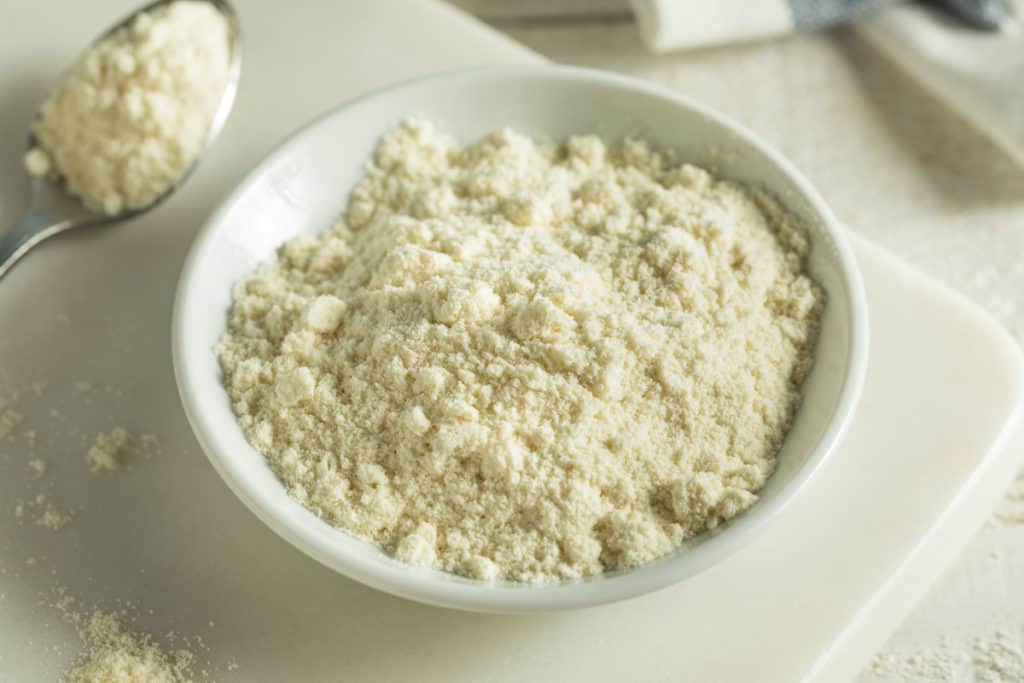 Collagen protein has become increasingly popular due to a variety of claims (some accurate and some totally not) peddled by health experts.
Collagen protein has become increasingly popular due to a variety of claims (some accurate and some totally not) peddled by health experts.
That said, collagen is not anywhere near a complete protein source! Nor should it be used as your sole protein supplement if you do not consume enough protein.
Doing so can contribute to amino acid deficiencies since collagen is predominately made up of two amino acids — Glycine and Proline.
Collagen can be incredibly helpful as an additional supplement if you’re addressing leaky gut syndrome, chronic skin issues, and joint problem. I often use it as part of my protocols with clients (which great success)!
And in case you’re wondering where collagen comes from — it’s derived from different types of animal and seafood sources. As a result, there are currently no non-animal sources of collagen on the market since it’s not made by plants.
How much protein do you need to eat daily?
How much protein you need to eat daily depends on who you ask. It also depends on how healthy, active, and old you are.
 Those who are very active (like a bodybuilder or a distance runner) will likely need more protein than someone who is sedentary.
Those who are very active (like a bodybuilder or a distance runner) will likely need more protein than someone who is sedentary.
The RDA for a normal sedentary person is typically 0.8g/kg of your body weight.
If you’d like to convert your weight in pounds to kilograms, CLICK HERE to use this online calculator.
That said, if you’re trying to increase muscle mass (maybe you’ve been sedentary for a long time), research suggests that about 1g/pound of your ideal body weight is likely more effective!
BUT what all of these articles don’t address is how much protein do you need to eat when you’re on a healing journey.
Since you’re here, I’m going to assume that you likely aren’t the picture of health.
You’ve got some underlying issues, autoimmunity, or long-term health concern that you’re working on. Someone your shoes does not fall into the “normal” category for protein intake.
The reason is that you’re asking your body to do a lot of heavy lifting. That heavy lifting requires more raw materials (like those amino acids we talked about) to be available in order to get the job done right.
That said, if you’ve got kidney issues, you should talk to your doctor before increasing protein intake. Too much protein can overtax your kidney function and would obviously be contraindicated.
How much protein do you need to eat (if you’re healing)?
How much protein you need when you’re healing your body from autoimmunity, gut issues, skin disorders, and other concerns varies.
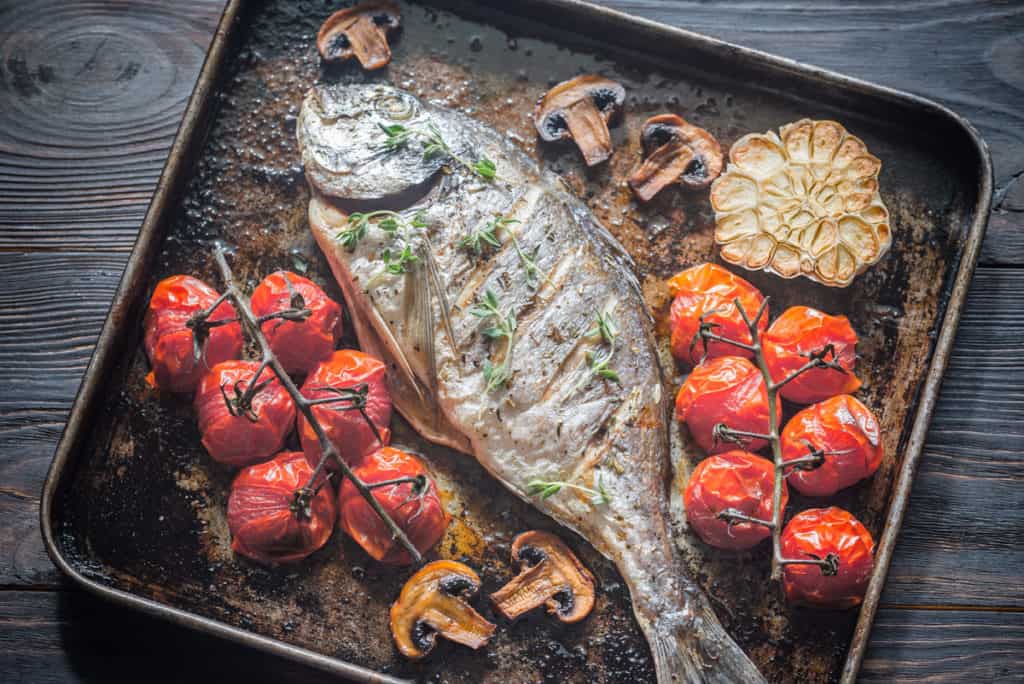 Generally with clients, I recommend a higher protein intake range of 70g to 120g of protein daily. Where someone falls depends on their health status and a number of other factors.
Generally with clients, I recommend a higher protein intake range of 70g to 120g of protein daily. Where someone falls depends on their health status and a number of other factors.
Shooting for at least 70g to 80g each day would likely be an excellent start if you discover that you’re not consuming enough protein.
Higher protein intakes are even more critical when it comes to healing wounds.
Sometimes protein intake amounts can be 2 to 2.5 times the number of kilograms of body weight. Someone who has developed wounds due to eczema, for example, may need a significantly higher amount of protein to help reseal the skin.
Tips to help you eat enough protein every day
Not getting enough protein is one of the biggest problems I see in my clinical practice when someone is on a healing journey. They mean well, but the recommendations shared with healthy people won’t work for them.
They are often surprised to discover that a higher protein intake improves their symptoms as long as we can ensure that it’s being digested and well-absorbed.
 The biggest challenge to increasing protein intake is knowing practically how much protein you need to eat. Frankly, no one knows what a gram looks like and can find it a bit challenging to figure out how to get enough in.
The biggest challenge to increasing protein intake is knowing practically how much protein you need to eat. Frankly, no one knows what a gram looks like and can find it a bit challenging to figure out how to get enough in.
The first step is to figure out how much protein you eat on average now before making changes.
I recommend using MyFitnessPal for 3 days to track everything you eat. Do not censor yourself here or alter your meals in any way.
You’ll get a baseline of the grams of protein you currently take in now. This will tell you how much extra you’ll need to consume and where you have gaps in your day to fill. For example, if you don’t eat any protein at lunch, then that would be a prime spot to add more in.
Then figure out how many protein grams you need daily by multiplying your weight (in kilograms) by 1.25 or even 1.5 depending on how sick you are (and how long you’ve been ill).
The more healing that’s required, the more protein that will likely be needed.
Food sources of protein (to get you started)
If you eat a vegetarian or vegan diet, you will need to be especially aware of protein intake since many sources of plant-based protein isn’t nearly as protein-dense.
Most of my clients are shocked to discover that they have to eat more beans and nuts since soy, tempeh, and seitan are off the table.
Additionally, many vegan sources of protein are not complete sources of protein. Thus the complete 20 amino acid spectrum isn’t present.
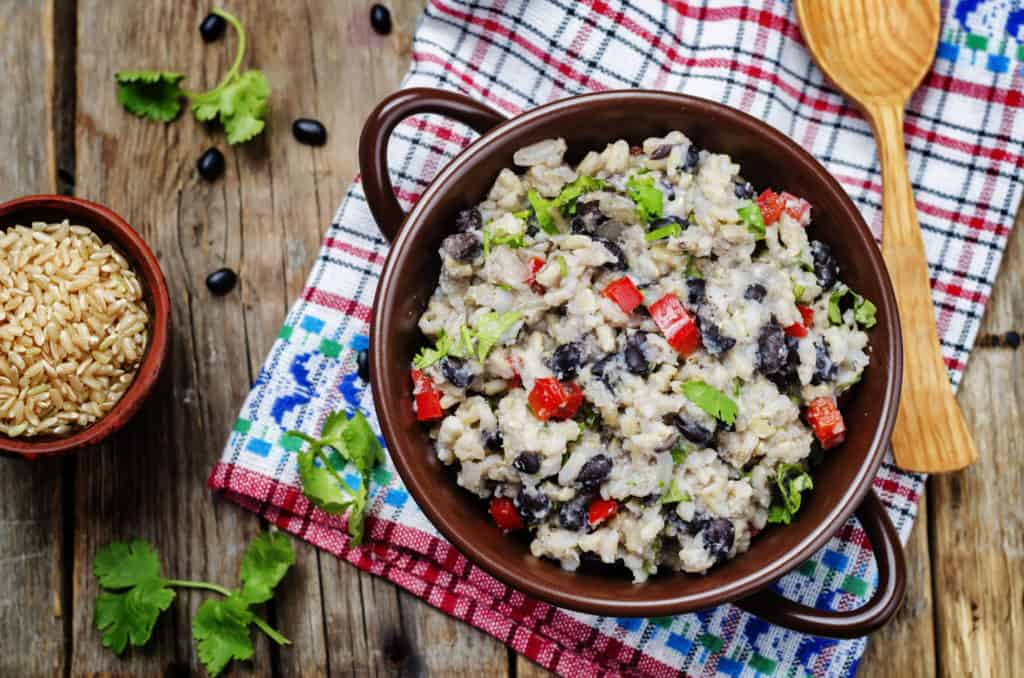 One trick to overcome this is with quinoa (which is a complete protein source). Also combining legumes and grains also gives you a complete protein source like the staple of rice and beans eaten throughout the world.
One trick to overcome this is with quinoa (which is a complete protein source). Also combining legumes and grains also gives you a complete protein source like the staple of rice and beans eaten throughout the world.
To make things easy, you could think about breaking up your protein intake throughout the day. Shoot for about 25g at each meal.
Use your MyFitnessPal account (which I have no affiliation with) to help you learn how much protein is in what you eat. This helps make the numbers and information practical and applicable to real life. In the future, you won’t need to count your protein grams because you’ll be able to approximate how much you eat.
A 1/4lb burger patty is about 23g to 25g of protein.
One chicken egg equals 6 grams of protein while a full can of tuna has about 20 grams. This is important and underscores why you can’t just eat one egg for lunch or a half can of tuna to truly get in enough protein.
As for legumes and grains, here are some quick protein stats for you (obviously not a complete list):
Chickpeas – 1 cup = 14.5g (source)
Black beans – 1 cup = 15.2g (source)
Pinto beans – 1 cup = 11.7g (source)
Sprouted lentils – 1 cup = 6.9g (source)
Amaranth (cooked) – 1 cup = 9.3g (source)
Quinoa (cooked) – 1 cup = 8.1g (source)
Split peas (cooked) – 1 cup = 16.3g (source)
As you can see, you have to eat a lot of the more plant-based protein sources to equal what you’d get from an animal source.
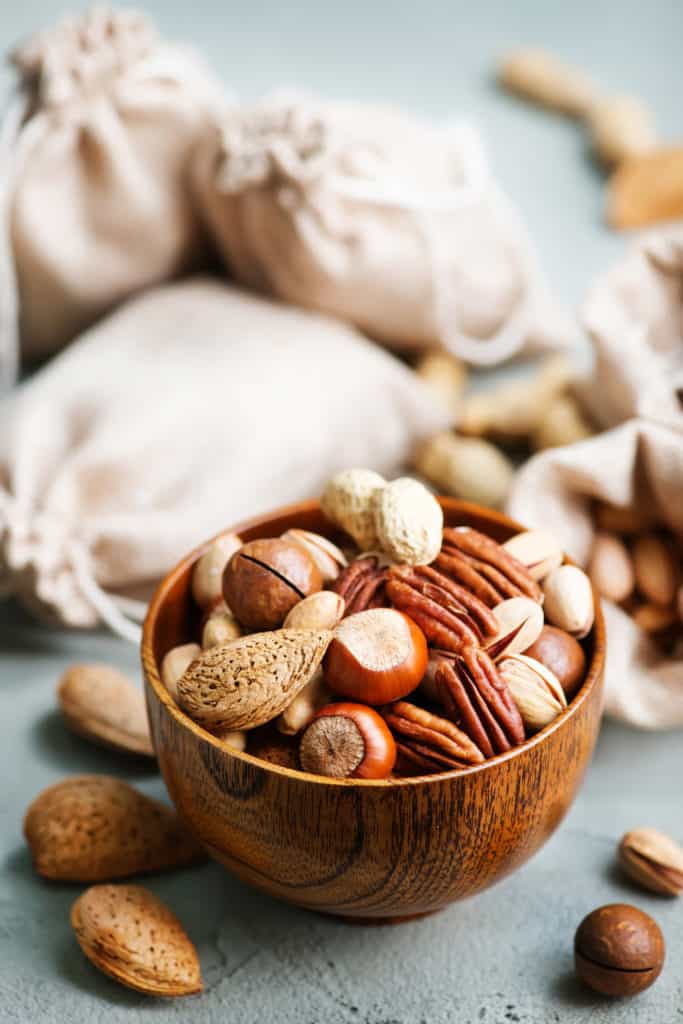 One downside is the massive amount of starch that is also present in these foods. Excessive starches in your diet can be contraindicated for gut infections and hormone imbalances often present on a healing journey.
One downside is the massive amount of starch that is also present in these foods. Excessive starches in your diet can be contraindicated for gut infections and hormone imbalances often present on a healing journey.
You can also opt for nuts (for example, almonds have 30.5g of protein in 1 cup). That said, you can’t eat too many nuts as they can cause GI issues like diarrhea, gas, and bloating. They can also be aggravating to an inflamed gut.
To be clear, it’s not impossible to see improvements on a vegetarian or vegan diet. I’ve certainly worked with successful clients who are uncomfortable or against eating animal-derived products. We’ve just got to work a bit harder and smarter to keep them on the right track.
Protein Supplement Sources
A lot of clients ask about protein powders… and yes, they can be used to up your protein intake. Sometimes, it’s the only way to get near the target especially if you’re vegetarian or vegan.
Protein powders can be a huge help since they can be made into protein shakes or added to yogurt, pudding, or oatmeal.
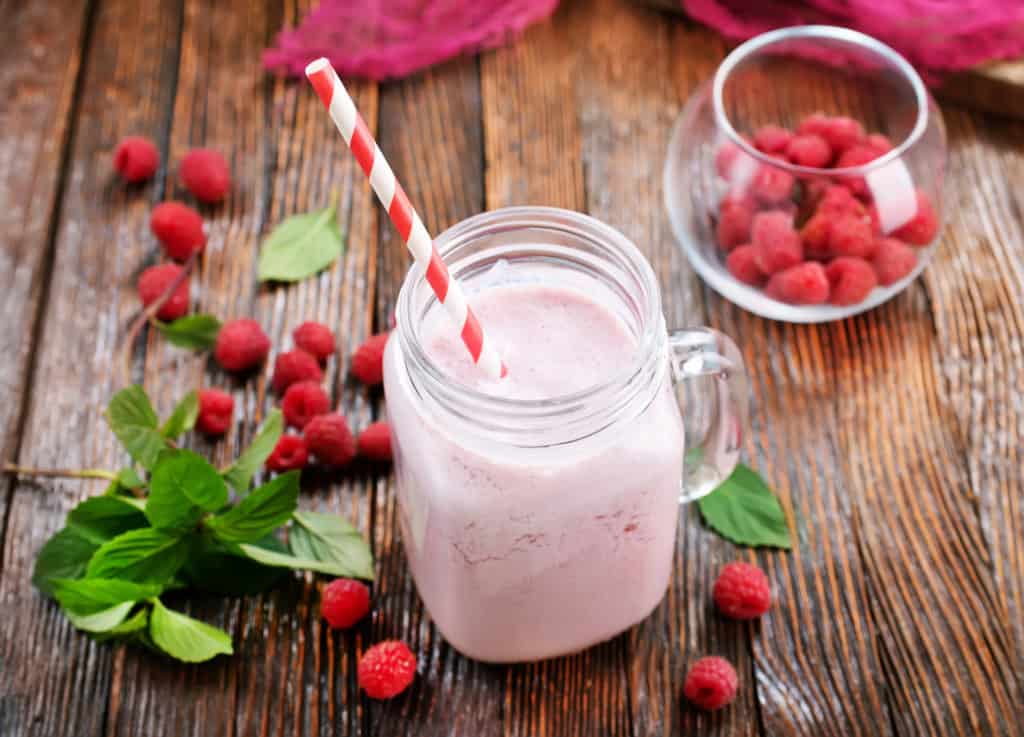
If you do eat meat, I recommend hydrolyzed beef protein isolate.
The reason is that it’s easy to absorb since the protein has already been broken down for you. If you’ve got leaky gut, autoimmunity, chronic skin issues, gut infections, or struggle with serious fatigue, it can be a lifesaver.
My favorites include this one from Designs For Health or this one from Equip Foods.
The difference between these two is simply that the Designs for Health option is intended for people whose digestion is pretty wrecked or where they are nutritionally depleted. The protein is fully pre-digested so your body can easily absorb it without needing sufficient stomach acid and digestive enzymes to break it down first.
Be mindful that vegan protein powders are often too low in protein based on their serving sizes and require a larger serving (to total closer to 25g).
If you prefer a vegan protein powder, THIS BRAND would be a good option. As you can see on the label, you’d need to use 1 1/2 scoops to get the proper amount of protein daily.
As for collagen which I’ve already mentioned, it can be added additionally in a protein shake as well as taken at other times during the day.
One tablespoon of collagen powder adds about 6g of protein to your daily count. This is one of my favorite brands that offer collagen from cattle, chicken bone broth, and also marine sources.
Here’s how I use collagen in eczema-soothing smoothie recipes so that you get enough protein and helper nutrients.
Though this is often ignored, you can now see that how much protein you need is more than what you thought. Many of my clients are shocked to discover just how important protein intake is so that they can get better.
So don’t skimp… and hold off on cutting back on protein until your body is in a better, more balanced state.







Actually, excess protein is converted to fat and stored as fat in the body. Eating too much of any macronutrient will lead to weight gain.
Actually, excess protein is converted to glucose (via a process called gluconeogenesis) and when it’s not used, it will be stored as fat. That’s why a high protein diet isn’t ideal for someone who is diabetic which can trigger blood sugar spikes. I interviewed Maria Emmerich on my podcast about this several years ago actually.
However what I’m talking about in this article is a much different situation. The concern is that people who are healing require more protein and are cutting protein after listening to people online talk about eating less protein without considering WHO that advice is really appropriate for. Diets change as we go through life, but you have to eat in a way that will support your health when you are healing… you can always cut back once you’ve turned things around and “filled the well”.
I have gut issues and was told up my fat and moderate protein. Which is true? I am working on cutting sugar and feel I definitely am a sugar burner.
Hi Brenda! If you eat a lot of sugar, then an easy first step to reducing it would be to eat more fat and protein. That said, if you’ve got got issues (and obviously I don’t know what else is going on), you may likely need to be more on top of protein intake… and thus eating closer to that 60 to 70g/day mark. If you’re not sure how much protein you eat, use MyFitnesPal to track your diet for a few days and then look at the breakdown of protein, fat and carbs. That is a great way to get data to help you do this rather than flying blind by just relying on what foods you think have a lot of protein in them.